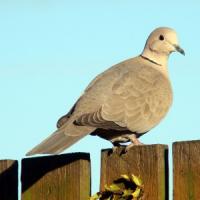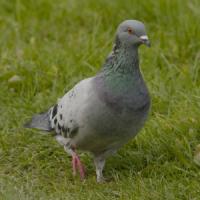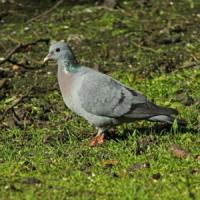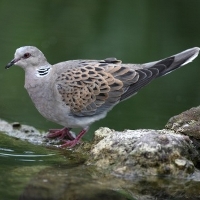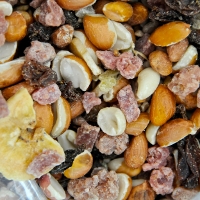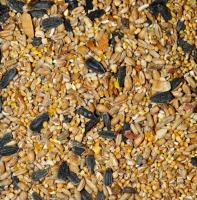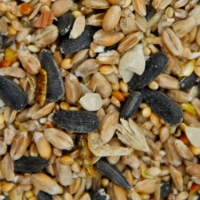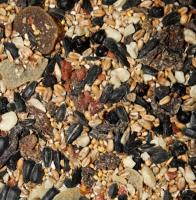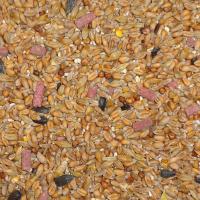- Home
- FAQs
- Customer Video Gallery
- Customer Photo Gallery
- Bird Facts
- Bird Food Blog
- Bird Information
- Feeding Advice
- Small Animal Information
- A to Z of Guinea Pigs
- A to Z of Hamsters
- A to Z of Rabbits
- Basic Care for Guinea Pigs
- Basic Care for Hamsters
- Basic Care for Rabbits
- Basic care for Chinchillas
- Basic care for Ferrets
- Basic care for Gerbils
- Basic care for Mice
- Basic care for Rats
- Buying a Healthy Small Animal
- Does your Reptile need a Licence
- Equipment for Ferrets
- Equipment for Hamsters
- Equipment for Mice
- Equipment for your Chinchilla
- Equipment for your Gerbil
- Equipment for your Guinea Pig
- Equipment for your Rabbit
- Keeping a House Rabbit
- Dog Information
- Cat Information
- Customer Information
- Fat Balls
- Suet Pellets
- Straights
- Seed Mixes
- Suet Treats
- Mealworms
- Bird Feeders
- My Account
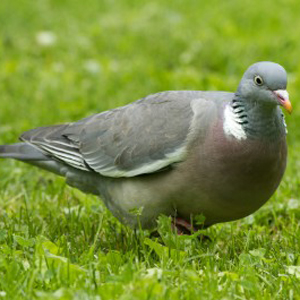
| Scientific Name | Columba palumbus |
| Breeding | April |
| Fledge Days | 29-35 |
| Incubation Days | 17 |
| Lifespan | 3 years |
| Number of Clutches | 3 |
| Number of Eggs | 2 |
| Size | 40 - 42cm |
| Weight | 450g |
| Wingspan | 75 - 80cm |
Bird Family : Pigeons and Doves
Woodpigeon Facts - Information About Woodpigeon
Woodpigeon-Columba Palumbus
The Woodpigeon is our largest Pigeon, it is a very frequent garden bird and will take food from the bird table and the ground beneath it. They are large dumpy looking birds and will parade around the garden, generally in pairs. It has increased in numbers over recent years and occurs in many habitat types.
It is common throughout the UK.
Identification:
Adult
- The Woodpigeon is a large dark grey Pigeon; it is much commoner than the similar looking Stock Dove and shows far more white in its plumage.
- Sexes alike.
- Upperparts; Tail, dark grey with broad black terminal band, this band has a paler upper edge.
- Rump, back and mantle all dark bluey grey.
- Head is also bluey grey and shows a large white neck patch with iridescent greenish patch above.
- The eye is white and bill pale orange with red base and small white shield.
- The folded wing is blue grey with black primary feathers which have paler edges.
- The wing also shows a white shoulder, which, in flight, shows as a broad white bar across the wing.
- Underparts; breast is grey with a salmon pink wash, belly pale grey.
- In flight the bird appears fairly uniform grey from below, look for white upper wing band, white neck patch, dark primaries and dark tail band.
- Legs are dark pink.
Juvenile
- Juveniles appear from April onwards and are similar to adults, they lack the white neck patch and iridescence, look a little darker and have a dark bill and dark eye.
Status and Distribution
The Woodpigeon is a very abundant breeding resident in the UK with over 3 million pairs. The Woodpigeon occurs in all counties and habitat types throughout the UK.
The Woodpigeon has adapted well to changes in agriculture and has simply moved into our towns and cities as well as breeding in the more traditional type habitats. Numbers increase in winter as continental birds move in.
Habitat/Food
Woodpigeons occur in all habitat types throughout the UK, woodlands, parks, gardens, farmland, hedgerows, towns and cities. In the garden Wood Pigeons will take spilt Seed Mixes from the ground and will happily use Bird Tables with seed on. In farmland habitat it will be seen feeding on Seed Mixes, young shoots, Berries and small Insects.
Song/Call
A very common sound during the spring and summer months, the Woodpigeons song is well known even if you don’t recognise it.
The song and has 5 parts and is rather horse in its delivery
The second syllable is the longest and there is a pause between 3 and 4.
‘Who-whoooo-who------who-who’
The following food is favoured by Wood Pigeon




